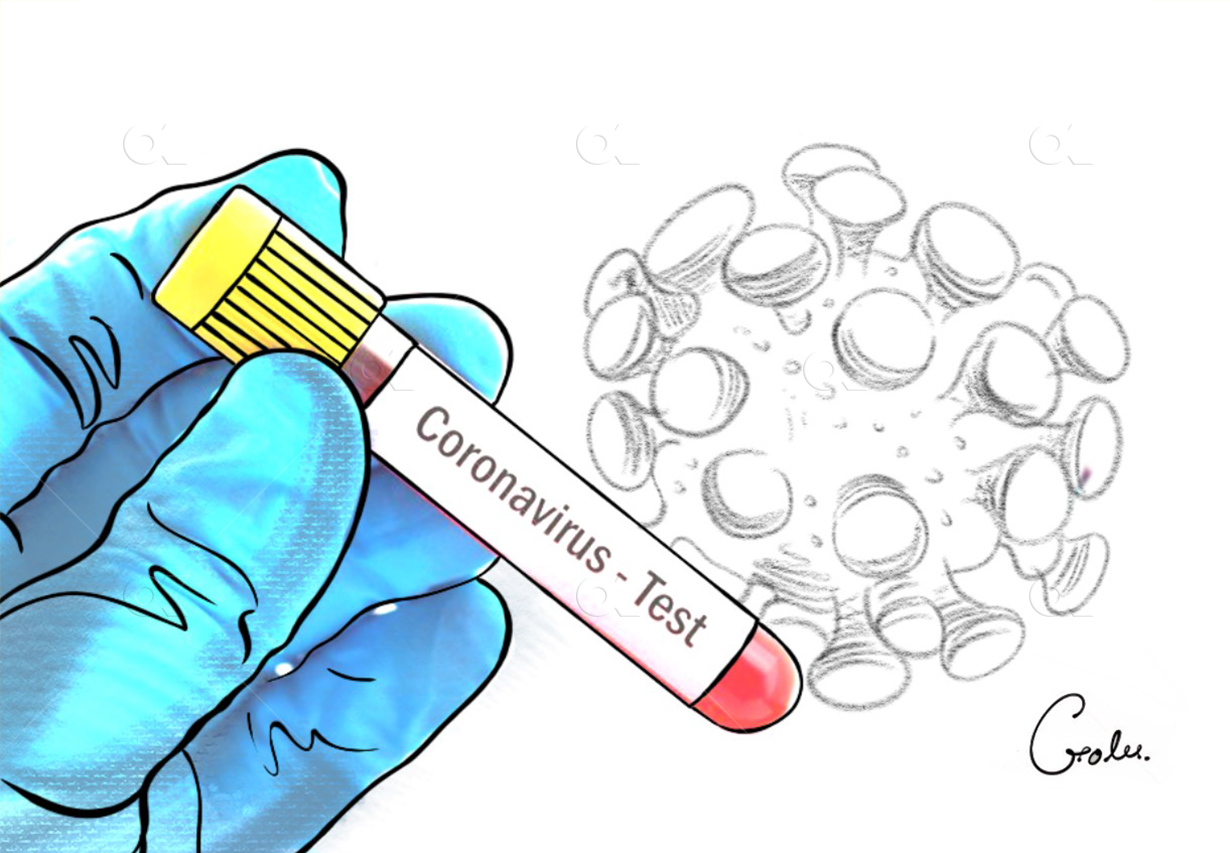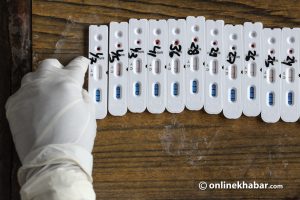
Three people–each from Kathmandu, Birgunj, and Rautahat–tested positive for the novel coronavirus even after recovery. Such recurring cases have intensified the fear of infection amongst the people. Many have raised the question: Can the virus be transmitted again from those patients who have been confirmed recovered and discharged.
Public health experts do not have a definite answer to this question. Most of them opine that it is difficult to say whether such people can transmit the disease. Therefore, the recovered patients who tested positive again are kept in isolation again, they inform.
According to one expert, the virus, whether active or in the process of becoming inactive, shows positive results in the PCR test. Whereas the inactive virus does not transmit the infection to others, only those that are alive can. He also suggests that a virus culture is necessary to know if the virus that tested positive in the PCR test is inactive or active.
He recommends that it is more appropriate to refer to such cases as ‘re-positive’ cases instead of ‘re-infection cases’ because no one else transmits the virus, rather the virus present in one’s own body is seen in the test again in such cases.
Testing positive again is normal

Though this tendency is new for Nepal, it is not the first time in the world that those who have returned home after recovering have retested positive for a particular infection.
A large number of people in South Korea, the country believed to have succeeded in controlling the coronavirus spread, tested positive again after their recovery. In China too, 14 per cent of the patients who had returned home after recovery tested positive again. In Japan, it is 10 per cent.
As per public health scientist Dr. Sameer Mani Dixit, when any Covid-19-infected person, who is either in the process of recovery or just completed it, coughs, inactivated virus particles and dead cells come out to their throats from their lungs. If one goes for a follow-up and his/her samples are taken and tested during such a period, the persons test positive in the PCR test.
“This is a normal process,” says a genetic scientist adding, “The sensitivity of PCR test is 70 per cent worldwide, and similar cases are occurring in many other places as well.”
Reappearance after recovery
According to a Quartz article, when a Covid-19 patient is healing, the virus cells become inactive. And, when the virus is released from different cells, sometimes a sufficient number of the virus cells cannot come to the swab while collecting the sample. The test from such swab results in negative. But, sometimes, when the virus is leaving the cells, a sufficient number of the virus cells accumulate in the swab, and such a swab test results in positive.
Also, public health experts notify that when the patient does not get enough time to heal, s/he may retest positive for the Covid-19. However, to find out if the virus is active, the virus load should also be checked during the PCR test.
According to the World Health Organisation (WHO) guidelines on clinical management, the patients can be discharged from the hospital after receiving two consecutive negative reports. Similarly, clinically recovered patients can be discharged after 24 hours. So far, Covid-19 patients are said to recover in two weeks. All three people who tested positive again in Nepal were discharged after receiving negative reports three times in a row. Also, two of the three were hospitalised for more than two weeks.
Is human error responsible?

Virologist Sudip Khadka believes that the major reasons for such cases are human and technical errors. Sometimes, the recovered patients may test positive again after transmitting the virus from another infected person. He stresses, “Sometimes, the nose might be free of the virus, but it may be present in the trachea. So, it is very important to know how the samples are collected.” According to him, such reports come even when the health workers do not take enough samples from the patients.
He adds, “The RNA has to be handled very carefully. If proper precautions are not taken, it will be destroyed and the test result will be negative. If all the procedures are followed appropriately while collecting the next swab samples, another report can come positive.”
The WHO has also commented it is difficult to say exactly what is happening on such issues. It informs that the issues of those who were discharged from the hospital after recovery testing positive again are being studied.
“We are studying both the negative and positive reports and samples of people who have received such reports,” the WHO said, “First, it is important to confirm whether the swabs of those patients were collected properly or not. Covid-19 is a disease; we need more and more data to study about it.”
Researchers also report that even if the antibodies are produced in the body, it may test positive again. Research has concluded that the reactivation of the virus can be explained in many ways. However, the WHO said, “Currently, it would be too early to say anything about such cases retesting positive after recovery. We have been fighting this virus for months. This virus has changed a lot. It is difficult to know what will happen now, so we have to focus on developing vaccination.”























